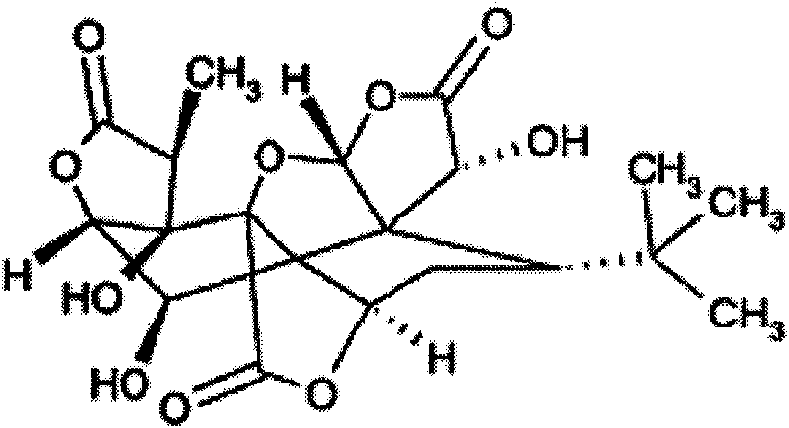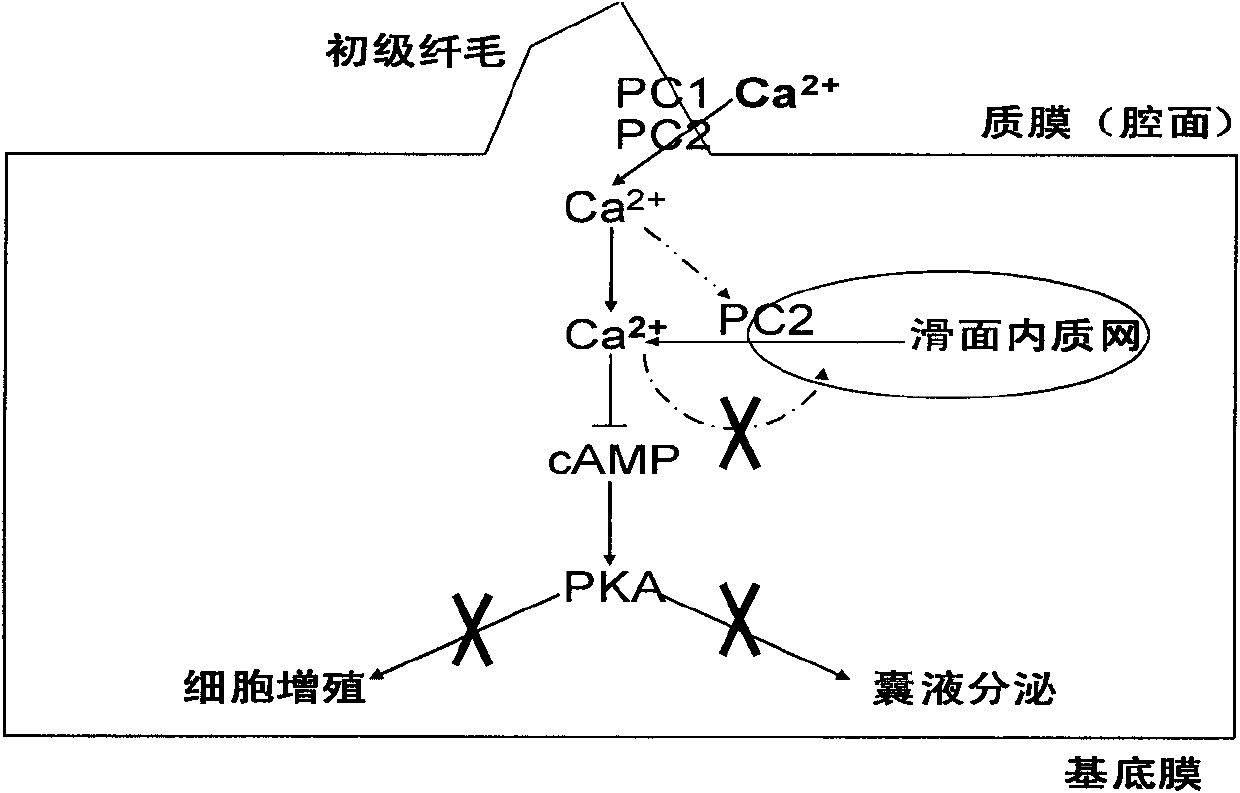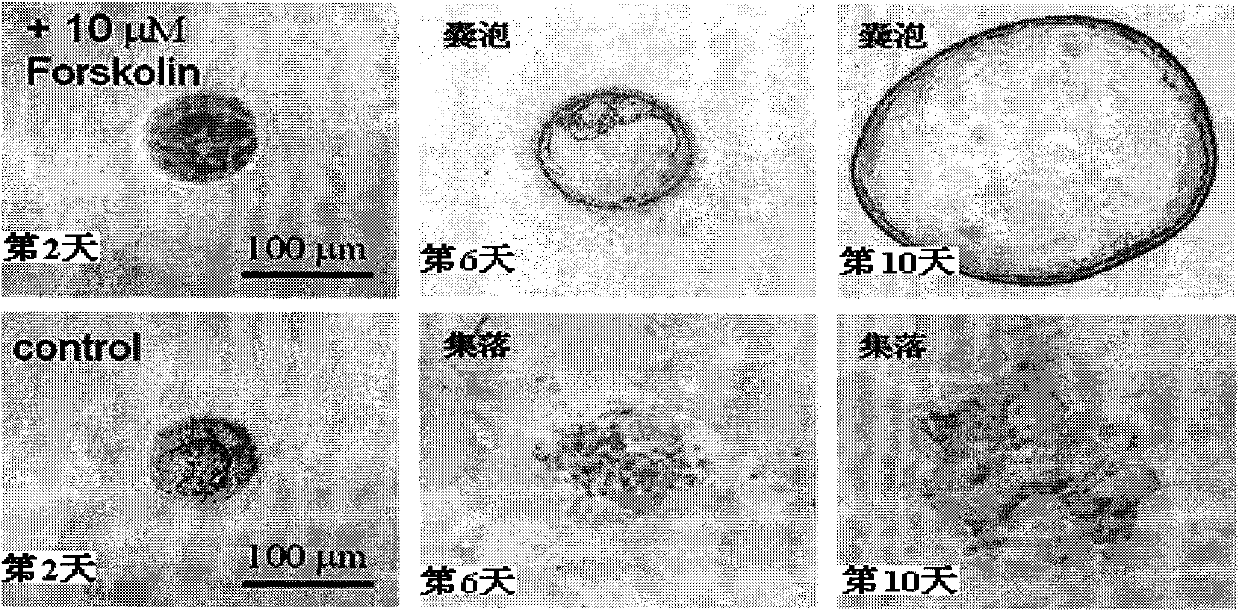New application of ginkgolide B
A technology of ginkgolide and medicine, which is applied in the new application field of ginkgolide B, and can solve the problems of ginkgolide toxicity and unproven effects
- Summary
- Abstract
- Description
- Claims
- Application Information
AI Technical Summary
Problems solved by technology
Method used
Image
Examples
Embodiment 1
[0063] Example 1, Ginkgolide B inhibits the formation and growth of MDCK vesicles
[0064] 1. Ginkgolide B can inhibit the formation of vesicles, and the effect has a dose-effect relationship
[0065] 1. Vesicle formation inhibition experiment
[0066] Canine kidney cells (MDCK) were stimulated by cAMP to form vesicles when cultured in three-dimensional Matrigel, and they continued to grow. Forskolin is an activator of adenylyl cyclase, which can mediate the generation of cAMP, so forskolin can promote the formation and growth of MDCK vesicles, whose vesicle properties are similar to those of polycystic kidney vesicles, It is the best in vitro model for screening and evaluating the pharmacological activity of compounds for treating polycystic kidney disease.
[0067] MDCK cells (purchased from ATCC, USA, catalog number CCL-34) were cultured in culture media containing 10 μM forskolin (forskolin, purchased from Sigma, catalog number F6886) and concentrations of 0 M, 12.5×10 ...
Embodiment 2
[0072] Embodiment 2, the cytotoxicity of ginkgolide B, the impact on cell growth and differentiation
[0073] 1. Determine the cytotoxicity of ginkgolide B by MTT assay
[0074] The log phase MDCK cell suspension was inoculated in a 96-well culture plate, and each well contained 4×10 3 Each well was given 200 μl of MDCK cell culture medium (made from DMEM medium (purchased from U.S. Invitrogen Company, catalog number 12100-046) and F12 medium (purchased from U.S. Invitrogen Company, catalog No. 21700-075) in equal volumes. mixed), placed in 5% CO at 37°C 2 Incubate for 24 hours in the incubator. Then add the final concentration of 1 × 10 to the cell culture plate -4 M, 1×10 -5 M, 1×10 -6 M and 1×10 -7 M ginkgolide B 20μl, continue to culture for 24 hours. Remove the supernatant, add 200 μl MDCK cell culture medium and 20 μl MTT solution with a concentration of 5 mg / ml, and continue to cultivate for 3 hours. Remove the supernatant, add 150 μl dimethyl sulfoxide to each ...
Embodiment 3
[0085] Example 3. Determination of the inhibitory effect of ginkgolide B on the growth of embryonic kidney vesicles by an in vitro embryonic kidney model
[0086] On the afternoon of the first day, 6-week-old ICR mice (purchased from the Experimental Animal Center of Peking University Health Science Center) were mated in the same cage at a ratio of 1:1. It means that the female mice have been pregnant for half a day, and the mice without vaginal plugs are divided into cages first, and then re-caged in the afternoon, and then observed on the second day; the pregnant female mice continue to be fed alone for 13 days, and the embryonic kidneys are taken on the 13th day and cultured on a transwell plate.
[0087] Take the 13.5-day-old mouse embryonic kidney and under the action of 100 μm 8-Br-cAMP (purchased from Sigma, product number B-1381), multiple and progressive renal vesicles will be formed in the kidney tissue, which can be used as an evaluation An in vitro whole-organ mode...
PUM
| Property | Measurement | Unit |
|---|---|---|
| diameter | aaaaa | aaaaa |
Abstract
Description
Claims
Application Information
 Login to View More
Login to View More - R&D
- Intellectual Property
- Life Sciences
- Materials
- Tech Scout
- Unparalleled Data Quality
- Higher Quality Content
- 60% Fewer Hallucinations
Browse by: Latest US Patents, China's latest patents, Technical Efficacy Thesaurus, Application Domain, Technology Topic, Popular Technical Reports.
© 2025 PatSnap. All rights reserved.Legal|Privacy policy|Modern Slavery Act Transparency Statement|Sitemap|About US| Contact US: help@patsnap.com



